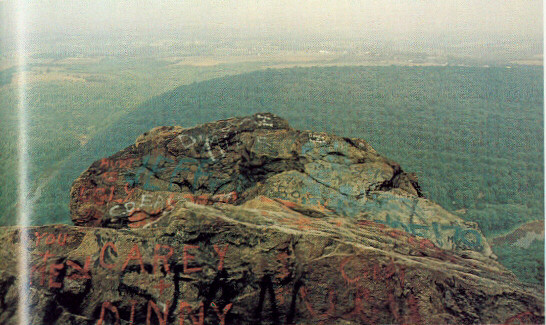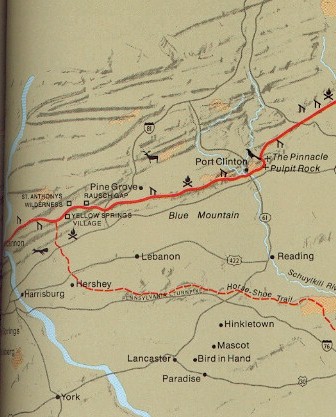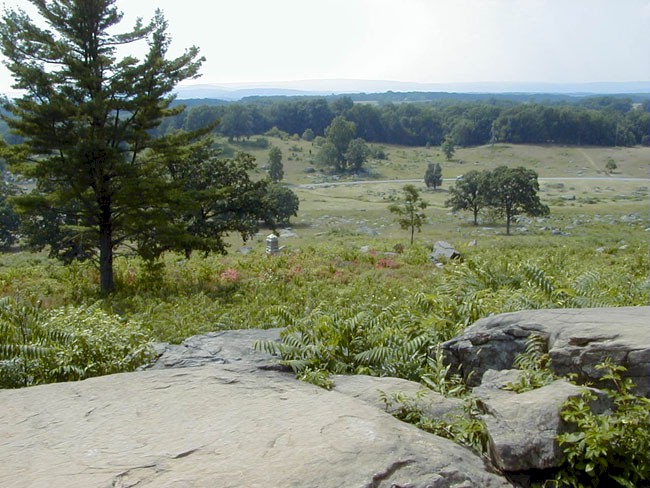Side Trips from Indiantown GapThe Appalachian TrailThe Appalachian Trail wends northward from Springer Mountain, Georgia, to Mount Katahdin, Maine, for 2,015 miles along the spine of the Appalachian Mountains. Since the inception of the trail network, local associations have volunteered to mark, clear, and maintain sections of trail that jointly are known as the Appalachian Trail. Even though the trail crosses many state and national parks, a large part of the trail traverses private land. Appalachian Trail Conference While stationed at Ft. Indiantown Gap, I spent many weekends on Blue Mountain, traversing a thirty-mile section from Interstate 81 to the Susquehanna River above Harrisburg PA. Some of my favorite spots were the bottom of Racetrack Falls and the shelter at the top of the cliffs on the south side of the ridge from Hawk Rock. The night of 4 July 1985, I sat with my feet dangling over the cliff and watched the fireworks over the city of Harrisburg.
| |||||||||
|
Gettysburg Battlefield PAThe Gettysburg National Battlefield is located about forty miles southwest of Harrisburg. The park is probably the most visited battlefield in America. General Lee and the Army of Northern Virginia were looking for a decisive victory to end the Civil War. Leaving Virginia by way of the Shenandoah Valley, Lee moved north through Maryland and into Pennsylvania in an attempt to draw the Union Army of the Potomac out into the open. The ensuing battle, which lasted from 1 to 3 July 1863, was the decisive battle of the war. On 1 July 1863, both armies were on the move; and the only question was where was the battle going to take place. General A. P. Hill's II Corps initially moved toward Gettysburg to seize a shoe factory because many of his soldiers were barefoot. However, Union Cavalry General Bufford managed to position two Cavalry Brigades across Seminary Ridge and block the Confederate advance, and the Army of the Potomac assumed the high ground on Cemetery Ridge. On 2 July 1863, General Lee attempted to turn both the right (north) and left (south) flanks of the Union Army. The critical point of the entire battle was the action at Little Round Top where Colonel Chamberlain's 20th Maine held against seven assaults from Hood's Division. The battle is perhaps best known for Picket's Charge of 3 July 1863. General Lee, having failed to turn the Union Army on the left or the right, decided to attack the center. Even though Longstreet's I Corp fought valiantly, the combined force of arms arrayed against them was an insurmountable obstacle. The charge failed, and the Army of Northern Virginia withdrew from the battlefield. The end result was that the Union would be preserved; but the cost was over 50,000 soldiers dead, many of whom are buried in the Gettysburg National Cemetery.
| |||||||||
Return to Travels | |||||||||
Military Home |
Lewis-Genealogy.Org | ||||||||





